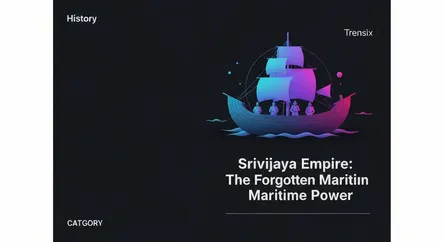History
Srivijaya Empire: The Forgotten Maritime Power

Discover the Srivijaya Empire, a dominant maritime and commercial kingdom that controlled Southeast Asian trade and spread Buddhism for centuries.
What is it?
The Srivijaya Empire was a powerful Buddhist thalassocratic, or maritime, empire centered on the island of Sumatra, in modern-day Indonesia. Flourishing from the 7th to the 13th century, it controlled much of the Malay Archipelago. Its power was based on a formidable navy that dominated key international sea trade routes, particularly the Strait of Malacca and the Sunda Strait. This strategic control allowed Srivijaya to become a wealthy commercial hub, facilitating trade between China, India, and the Middle East. It was also a major center for the expansion and study of Mahayana Buddhism, attracting pilgrims and scholars from across Asia.
Why is it trending?
Though largely forgotten until its rediscovery by scholars in the 20th century, Srivijaya is a subject of growing interest for its unique role in history. It represents an early example of globalization, where control of trade routes fostered immense wealth and cultural exchange. The empire's success challenges traditional models of land-based empires, highlighting the power of maritime control and a decentralized "mandala" system of governance. Ongoing archaeological research continues to uncover new insights into this complex society, shedding light on the formation of political and cultural identities in Southeast Asia.
How does it affect people?
The legacy of the Srivijaya Empire is significant and enduring. It played a crucial role in the spread of Buddhism throughout maritime Southeast Asia, and its influence is visible in the art and religious practices of the region. The empire contributed to the development and spread of the Malay language, which became a lingua franca in the archipelago. For modern Indonesia, Srivijaya is a symbol of national pride and a historical precedent for a united archipelagic state, balancing the influence of the later Javanese Majapahit empire. Its history continues to shape regional identity and our understanding of Southeast Asia's interconnected past.